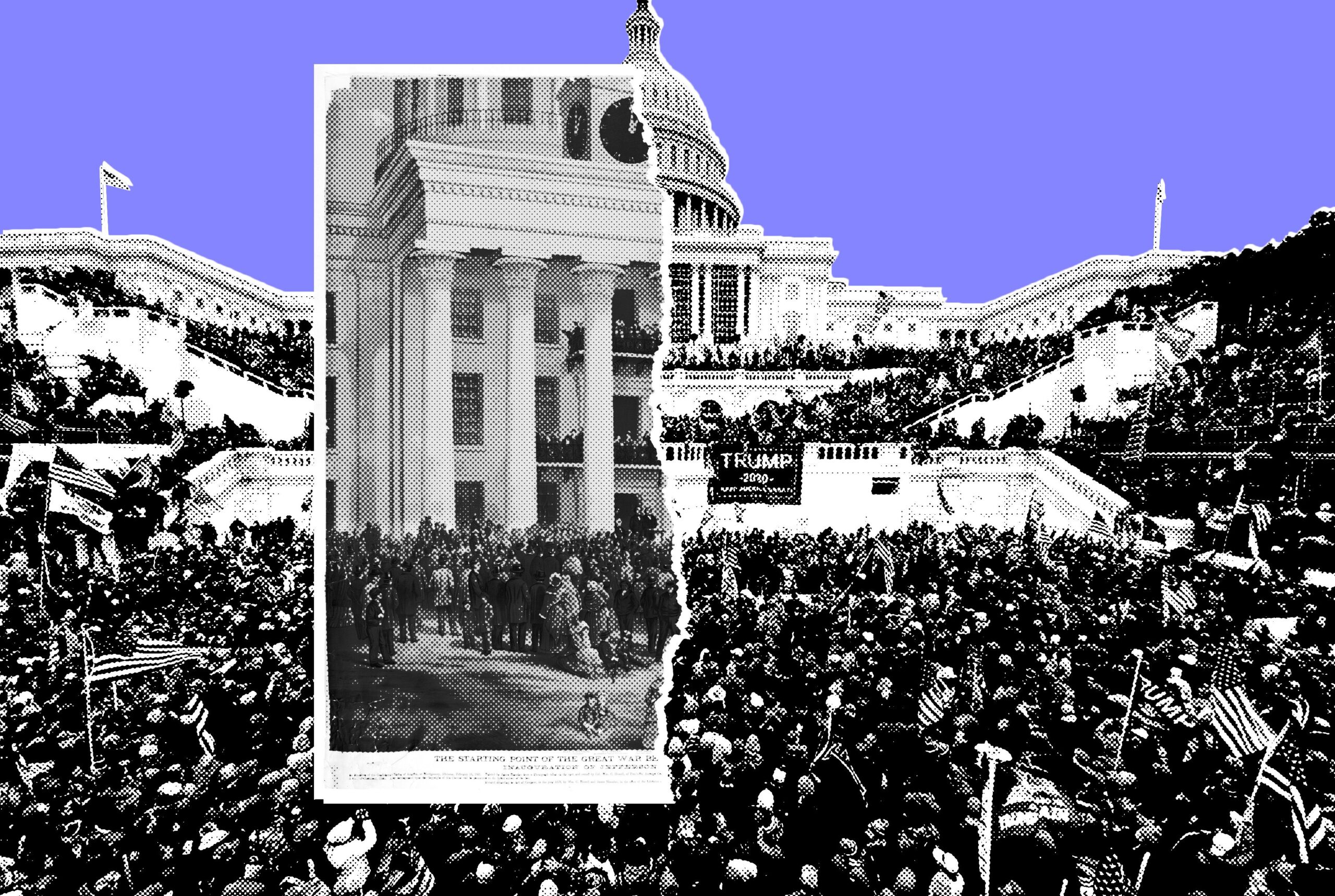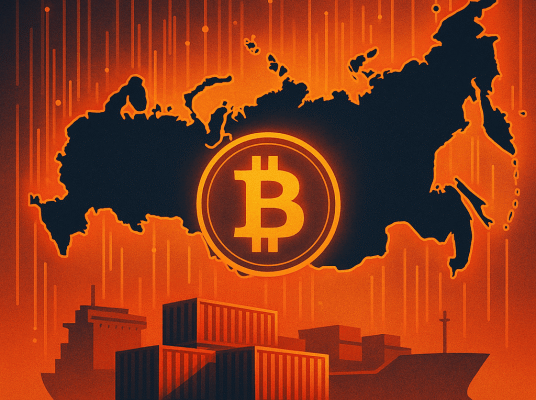Things look a little different in the US these days.
Leaves are turning, the football stadiums are full, and children are planning their trick-or-treating routes; there are also masked men snatching people off the streets, while the US military has had boots on the ground in four major cities, another state, and the nation’s capital. Last week, Illinois governor JB Pritzker went on national television and suggested federal immigration agents can be held legally accountable for how they conduct themselves. Elected officials such as Representative Marjorie Taylor Greene of Georgia have spoken openly about a “national divorce.”
It’s impossible to look around and not wonder whether the US is teetering on the brink—though of what, is the question. Ordinary, reasonable people are openly talking about whether the country is on the verge of something comparable to a slow-rolling civil conflict, if not something worse.
They’re not alone. Historians of those conflicts are worried. They’re not concerned about a full-blown civil war, featuring rival divisions of the US Army staging set-piece battles over territory, but something else that even the experts have a hard time putting their finger on.
Familiar frameworks, like the US Civil War or the Troubles in Northern Ireland, probably present too square a peg for the present round hole. “I’m creating a new hole for the peg,” says Robert Pape, a professor at the University of Chicago who has been studying political violence for the past three decades. Since 2022, he’s been working on a new concept he calls “violent populism,” which he thinks could better represent the country’s current moment. He describes it as something “between civil war and nasty politics as usual.” In “violent populism,” there is a certain level of demand for—or acceptance of—violence.
Real-life examples can range from January 6 rioters who battered police officers to Luigi Mangione superfans calling for the executions of executives.
President Trump’s actions count here too, Pape says: It doesn’t help matters that the Trump administration continues to refer to its political opposition as enemy combatants or uses explicitly violent and militaristic language to describe the current moment. “What Trump is doing is creating more and more permission structures for people to carry out violence for his goals,” Pape says, pointing to the pardoning and sentence commutations of January 6 rioters and the president’s encouragement of military generals to be more aggressive by using American cities as “a training ground” to fight “the enemy from within.”
Cranking up the temperature in a way that effectively encourages violence doesn’t necessarily require any explicit orders or stated wishes, Pape says. That comes with the constant “us versus them” mentality: Karoline Leavitt, the White House press secretary, put the administration line succinctly last Thursday when she said, “The Democrat Party’s main constituency are made up of Hamas terrorists, illegal aliens, and violent criminals.” (The White House did not return a request for comment.)
But is all of this enough to cause serious civil unrest? It very well could, but the situation has enough uniquely modern and dystopian elements that it’s worth considering all the different potential outcomes, experts say.
Not Your Great-Great Grandfather’s Civil War
Despite the Trump administration’s best efforts to depict antifa as a growing left-wing insurgency, it is not. There doesn’t currently appear to be any organized paramilitary formation carrying out routine acts of violence with the stated goal of overthrowing the US government. This makes our moment distinct from the 1960s and 1970s, when bombings and civil unrest felt like a weekly occurrence. In recent decades, most calls for violence in the US have originated from far-right extremists. Experts draw a line from the Oklahoma City bombing in 1995 that killed 168 people to more current far-right movements and calls for violence. Still, politically motivated groups have committed all sorts of violence, or promised revenge, in relatively recent memory without resulting in large-scale armed conflict.
“The US had one civil war, and it had decade after decade of paramilitary politics and people being murdered at polling booths and people believing every election was the end of the world and the end of the country,” says Greg Downs, a Civil War historian and history department chair at UC Davis.
Even if there were any desire for civil unrest on the left—something for which there is no evidence—the modern surveillance state would seemingly make it almost impossible to carry out.
“Everybody is on camera all the time, whether it’s because of Ring doorbell cameras or cell phones or highway traffic monitors—let alone drones and security cameras and stuff like that,” says Seth Rosenfeld, the author of Subversives, a history of the FBI’s war on student radicals. “If somebody were to try and mount a revolution, before they could really get going they would need to address all of these security concerns.”
“Can you really have a civil war in a country with a nuclear arsenal?” Downs asks. “Can you really have a civil war in a country with Black Hawk helicopters and all of the things that they can bring to bear?”
And even with social media and all the rest of our modern-day technology, it might not be so easy to even realize we’ve entered a period of civil conflict. It certainly wasn’t for Americans in the 1850s and early 1860s.
“Most Americans were stunned at the turn of events,” Manisha Sinha, a Civil War historian and the Draper Chair in American History at the University of Connecticut, tells me. She doesn’t “like all of this talk about a civil war today,” she says, because it can lead to a sense of inevitability.
But when it went down for real at the Battle of Bull Run in Virginia in 1861, much of the American public saw the likelihood of an actual war as anything but inevitable. Pape noted that onlookers brought picnic materials to Bull Run because “nobody thought it was going to be a serious civil war … When this thing was getting going, it was a joke.”
So what should people be taking seriously? And when?
The most significant aspect of what we’re currently dealing with, both the historians and several Democratic operatives told me, is the possible use of military personnel for law enforcement purposes. This has been generally illegal since the late 19th century; the most notable instrument that would authorize its use is the Insurrection Act of 1807, which Trump has repeatedly threatened to use.
One Democratic operative told me they don’t worry about anyone “taking up arms” over increased military involvement, but the images of ICE and troops in the streets alone give them great pause because of the fear they can instill in the public. “We are absolutely in the beginnings of some kind of, maybe civil war is not the right term, but the fabric of what binds America together at this point is basically on its final thread,” this Democratic source says, requesting anonymity to speak candidly without involving their clients in New York politics.
In America’s relatively short history, the country has a robust track record of presidents and governors utilizing the troops at their disposal—legally, usually—to tamp down on civil unrest.
“There is a potential for calamity with the politically fueled deployment of military troops to do police work,” Rosenfeld says, describing a horrific incident from 1969, during the People’s Park protests on a parcel of land owned by UC Berkeley. A “state of extreme emergency” declared by then-California governor Ronald Reagan enabled the deployment of the National Guard to quash student demonstrations against the Vietnam War and other issues, after Alameda County Sheriff deputies ran out of bird-shot pellets for their guns and switched to buckshot, a thicker and more lethal set of shells.
James Rector, a 25-year-old bystander, was watching the action unfold from a bookstore rooftop when he was shot by police, dying from his wounds days later. Dozens of others were wounded from either the buckshot rounds or by more conventional means, mainly billy clubs.
“We either had to use shotguns,” Alameda County sheriff Frank Madigan said at the time, “or retreat and surrender the city to the mob.”
The response to what became known as Bloody Thursday got so out of hand that helicopters dropped CS gas—a more intense form of tear gas, the same one used by the FBI against the Branch Davidians at Waco—onto the protesters. Wind pushed it into a hospital.
Fog of War
This is where Matt O’Brien, an Ohio-based historian specializing in 20th century Ireland, sees a similarity to the Troubles: the use in cities of out-of-state National Guard troops and formations from the Department of Homeland Security, who do not have the same training as law enforcement or familiarity with the arenas in which they are deployed.
“A lot of the British soldiers sent over to Northern Ireland were 18-, 19-year-old kids from Liverpool and from Birmingham,” O’Brien says. “Some of them were of Irish descent, and they were expected to carry out police duties, and they were woefully unprepared.”
In the US, federal immigration officers and National Guard troops remain in cities they did not sign up to police, with no clear end in sight. Where the administration takes this campaign from here is unclear, particularly in the context of court rulings which have prevented them from moving as aggressively as the administration would like.
For Pape, the uniquely American and Trumpian nature of the problem makes it harder for us to grasp. Or, at least, harder to grasp compared to those seeing this unfold from abroad.
“I think it’s basically hard for everyone here—and I’d put myself in this too—to get analytic distance when the violence is happening right in our country, right next door,” says Pape.
With things so dire, I want to end on a positive note. I reached out to Bill Ayers to talk me through this moment. Ayers knows a thing or two about militant armed resistance from his time in the Weather Underground during the 1970s, and just how dangerous it can get. His group, which opposed the Vietnam War and viewed the US government as an imperialist entity, targeted federal buildings with homemade bombs in the 1960s and 1970s. Three members of the Weather Underground were killed in an accidental explosion in 1970. Ayers was a fugitive for the next decade before he and his wife turned themselves in around the time that the federal charges against them were dropped. He ended up becoming a professor at the University of Illinois in Chicago.
Despite everything he went through, and everything he did, Ayers says protesters and organizers still stand a chance in this moment without needing to resort to violence.
“This is a teachable moment,” Ayers tells me. “Let’s, all of us, get into this moment and learn some shit … I think sometimes we need to resist, sometimes we need to put flowers in the guns of the National Guard, and persuade them—just a bunch of working stiffs who didn’t sign up to do this.”
This is an edition of Jake Lahut’s Inner Loop newsletter. Read previous newsletters here.




